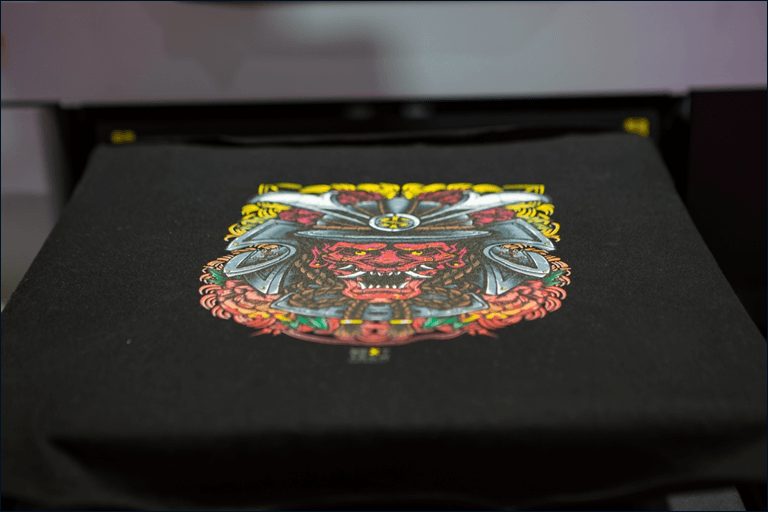
In an age where environmental consciousness is increasingly critical, the textile industry is undergoing a significant transformation. Traditional textile production methods have often been associated with high levels of waste, pollution, and resource depletion. However, advancements in technology, particularly the introduction of direct to fabric printing machines, are revolutionizing how textiles are produced, making it more sustainable. This blog explores the eco-friendly benefits of direct to fabric printing, focusing on the capabilities of a Direct to Fabric Digital Printer in Surat and how companies like Grando India are leading the way in sustainable textile solutions.
Understanding Direct to Fabric Printing

Direct to fabric printing (DTF) is a modern printing technique that involves applying ink directly onto the fabric without the need for screens or complicated setups. This method allows for high-quality, detailed prints and is suitable for a variety of fabrics, including cotton, polyester, and blends. Direct to Fabric Digital Textile Printers are equipped with advanced technology that enables vibrant colors and intricate designs, making them an ideal choice for businesses looking to innovate in textile production.
1. Reduced Waste Generation
One of the most significant eco-friendly advantages of using a direct to fabric printing machine is its ability to minimize waste. Traditional textile printing methods often involve excess material, ink, and energy consumption. In contrast, direct to fabric printing only uses the exact amount of ink needed for each print, significantly reducing material waste. Furthermore, the elimination of screens and plates means less waste generated from manufacturing these components.
By adopting direct to fabric printing, businesses can embrace a more sustainable approach to textile production while improving their overall efficiency.
2. Lower Water Consumption
Water is a critical resource in the textile industry, and traditional dyeing and printing methods can consume vast amounts of water. Direct to fabric printing technology drastically reduces water usage, making it a more environmentally friendly option. The inkjet technology used in direct to fabric printers requires only minimal water for cleaning and maintenance compared to conventional dyeing processes.
For textile businesses in Surat, this reduction in water consumption can lead to significant cost savings while promoting sustainable practices. Companies can play a pivotal role in conserving water resources, aligning with global sustainability goals.
3. Eco-Friendly Inks
Modern direct to fabric printers often utilize eco-friendly inks that are less harmful to the environment. Many manufacturers are now producing water-based inks that contain fewer toxic chemicals, making them safer for both the environment and human health. These inks produce vibrant colors and exceptional print quality while reducing the environmental impact associated with traditional solvent-based inks.
Investing in a Direct to Fabric Digital Printer equipped with eco-friendly inks is a proactive step toward reducing the carbon footprint of textile production. Businesses that prioritize sustainable materials and processes can enhance their brand image and appeal to environmentally conscious consumers.
4. Energy Efficiency
The energy consumption associated with textile production can contribute significantly to a company’s carbon footprint. Direct to fabric printing machines are designed to be energy efficient, requiring less power to operate compared to traditional printing methods. Many advanced models incorporate energy-saving features, such as automatic shut-off and low-energy print modes, further reducing their environmental impact.
By utilizing textile printing machines in Surat that emphasize energy efficiency, businesses can lower their operational costs while contributing to a more sustainable textile industry.
5. Customization and On-Demand Production
Direct to fabric printing allows for unparalleled customization and on-demand production. This flexibility means businesses can produce smaller batches tailored to specific customer needs without the risk of overproduction. In traditional textile manufacturing, excess inventory can lead to significant waste and financial loss.
On-demand production not only minimizes waste but also enables companies to respond quickly to market trends. This agility is crucial in today’s fast-paced retail environment, allowing businesses to maintain a competitive edge while adhering to sustainable practices.
6. Localized Production
The rise of direct to fabric printing technology also encourages localized production. Businesses can set up production facilities closer to their customer base, reducing transportation emissions associated with shipping goods over long distances. By producing textiles locally, companies can further minimize their carbon footprint and support local economies.
Surat, known for its vibrant textile industry, can benefit significantly from adopting direct to fabric printing. With advanced technology from Grando India, local businesses can leverage these machines to meet the growing demand for sustainable textiles while contributing to the community’s economic development.
Conclusion
The adoption of direct to fabric printing represents a significant step toward sustainable textile production. By reducing waste, conserving water, using eco-friendly inks, enhancing energy efficiency, enabling customization, and promoting localized production, businesses can minimize their environmental impact and align with global sustainability efforts.
For companies in Surat seeking to make a positive change in their production processes, investing in a Direct to Fabric Digital Printer from Grando India is a wise choice. Our state-of-the-art printing solutions empower businesses to create high-quality textiles while prioritizing sustainability.
Ready to elevate your textile production with eco-friendly practices? Explore our range of direct to fabric printing machines at Grando India today. Contact us to learn more about our innovative printing solutions tailored for your business needs. Join the movement toward a more sustainable future in the textile industry!
